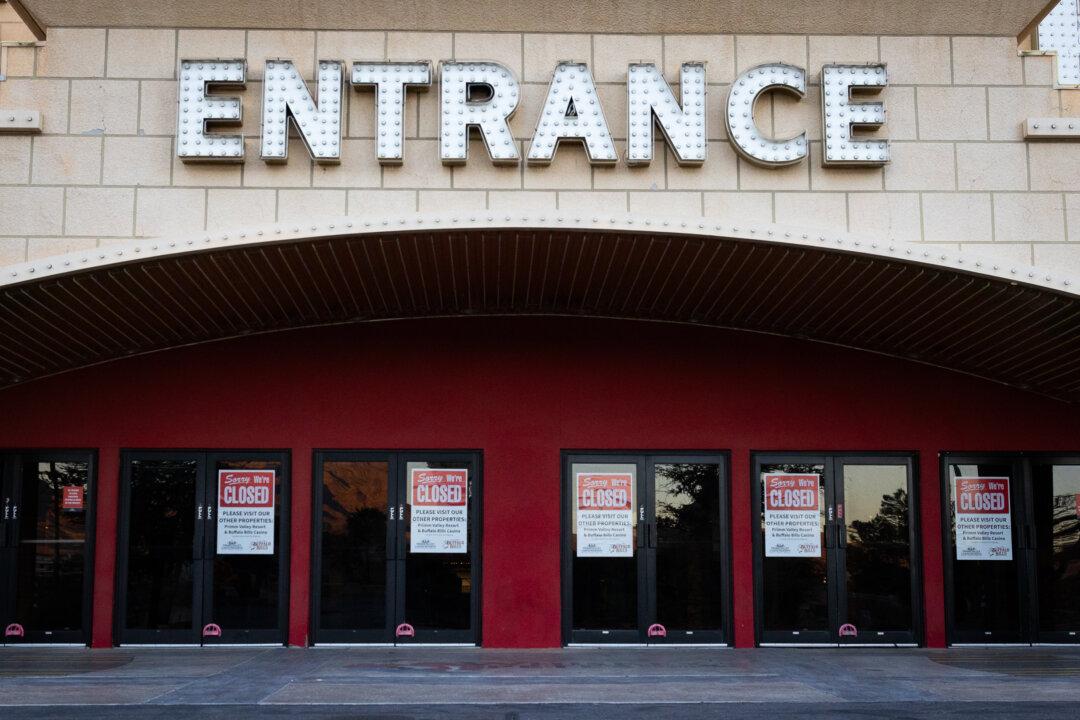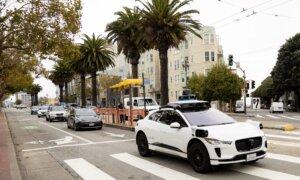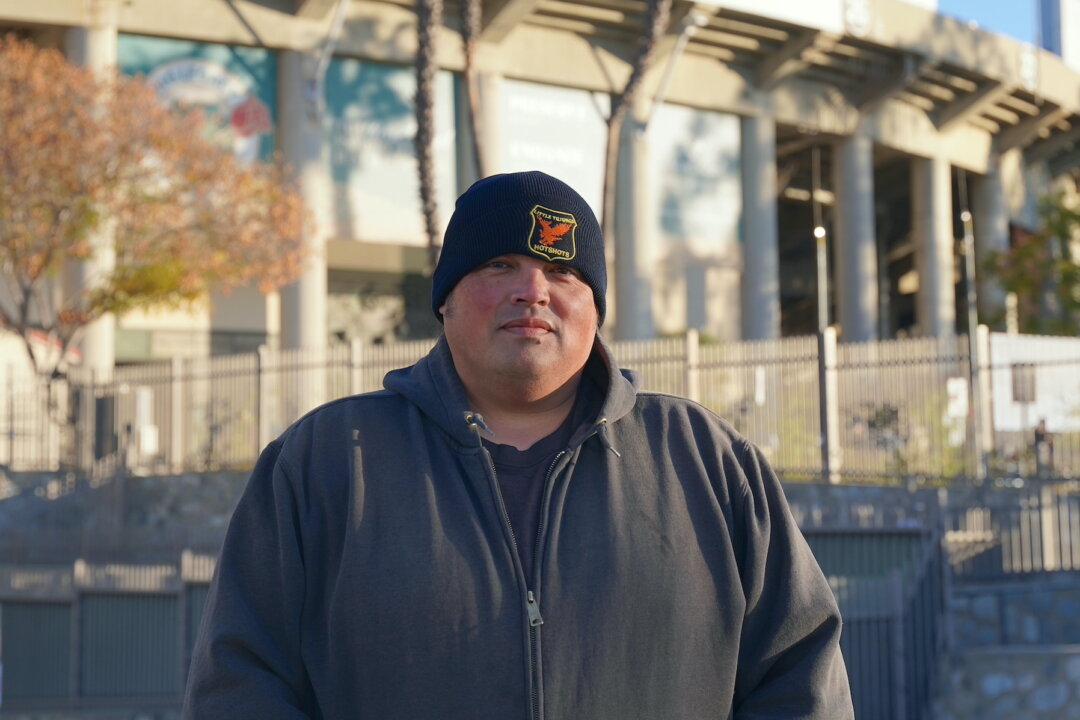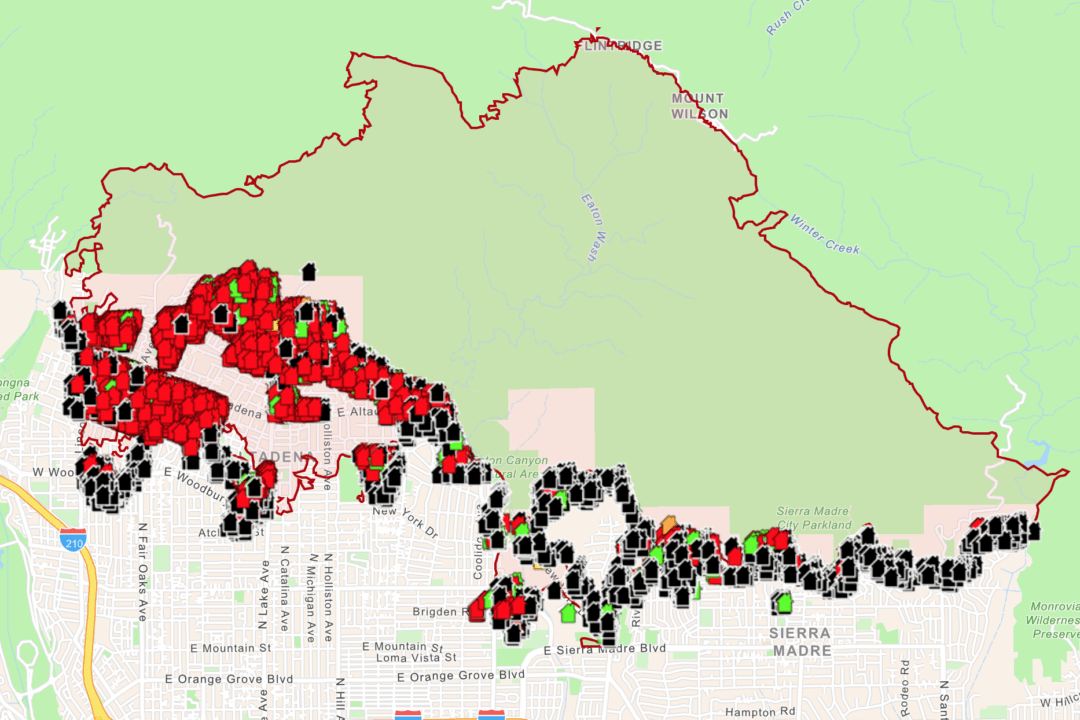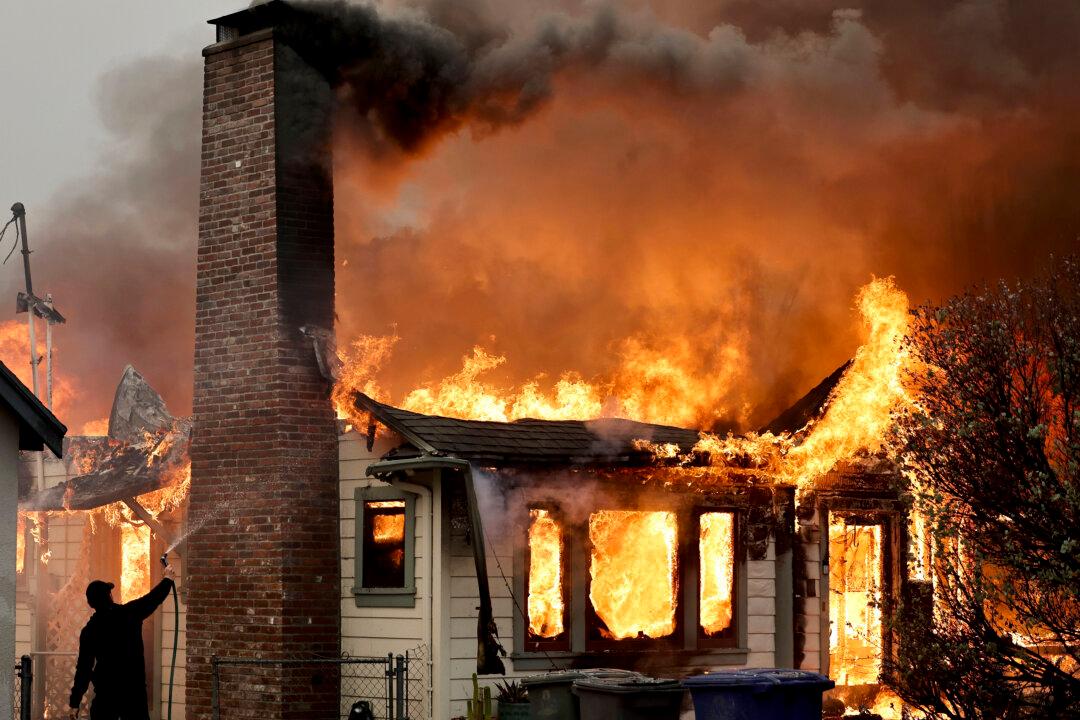PRIMM, Nev.—They came for the $1 shrimp cocktails and loaded hot dogs, for $15 rooms and the world’s tallest roller coaster—and for a first taste of action or last chance at redemption.
For a few solid decades, a trio of hotel-casinos in Primm, Nevada, just inches over the California state line and about 40 miles outside Las Vegas, lured gamblers with bottom-dollar deals and family-friendly activities—back when that still meant an arcade inside a smoky casino.
Today, Primm is a ghost town. Two of its three casinos and an attached mall are vacant, and the third is eerily half-animated, deserted save for weekend crowds drawn by a concert venue.
The road there has seen better days, too.
Traveled by generations of Southern Californians, from Rat Pack headliners to pensioner slot addicts, and everyone in between, Interstate 15 lately presents a procession of roadside ruins: abandoned gas stations, condemned motels and restaurants, closed mine shafts, and bone-dry waterparks.
Both the border town and the highway tell a story of decline that accelerated during the COVID-19 pandemic but began long before.
Kathy Ragancarter and Rosie Arguilles have been coming to Primm for nearly 50 years. The lifelong friends used to take a tour bus from Los Angeles, hop off with their kids, and ride a monorail that connected the three casinos.
“It used to be packed. We had such good times here,” she said. Her kids’ favorite was a log flume ride with impressive rockwork and mannequins that still snakes through Buffalo Bill’s casino. The roller coaster, monorail, and water ride have been dark for years.
More an outpost than a town, Primm interrupts the Martian expanse of Mojave Desert, announcing that you’ve made it to the border and Sin City is within reach.
Once the apex roadside attraction for drivers taking the I-15 from Los Angeles to Vegas, the development is a relic of a relic, a late 20th century commercial monument to bygone eras of the West, with other, incongruent elements thrown in.
Given the location, both remote and strategic, its fate is also bound to the only road that runs through it.

The interstates remain, but the way of life that they seeded is fading.
With cheap airfares, high gas prices, traffic jams, the ubiquity of mobile gambling, and high-speed rail in the works, why drive to Vegas at all?

There are other roadside attractions: a 70-foot ice cream sundae sculpture that advertises a massive candy store, and a beef jerky joint shaped like an alien spaceship. A sculpture garden dedicated to victims of communist China is a new addition, but monumental “mind virus” installations and a pyramid of skulls crowned with a hammer and sickle don’t quite resonate with the oddball mystique of roadside Americana.
“I want you to know that we’re on our way to Las Vegas to find the American Dream,” Hunter S. Thompson wrote in “Fear and Loathing in Las Vegas” (1971). “That’s why we rented this car. It was the only way to do it.”
Hitting the I-15 in a giant, gas-guzzling red Chevy is still possible, if less instinctive or symbolic. Cars are more reliable, the drive more self-contained; you can get from Los Angeles to Vegas in the space of a podcast or two, without needing to stop or much noticing the journey.

Primm reopened and renovated after the COVID-19 pandemic, and operators now say that they want to reimagine amenities to “better fit“ their ”new and current customers,” suggesting some amalgam of nostalgia and modernization.
During a visit to Buffalo Bill’s in early January, the mood was grim. Employees whispered about the closures among themselves.
“Because they’re not thinking,” one worker replied when asked why Whiskey Pete’s closed. “They’re trying to focus on Primm Valley and Buffalo Bill’s, but Whiskey Pete’s is a landmark. We have regular customers who have been coming here since the 1970s.”

Despite the decline, regulars such as Ragancarter and Arguilles still meet up in Primm every few months, driving from Barstow and San Luis Obispo in California to spend a few days together.
“We’re still best friends,” Arguilles said. “We just jibe.”
Another employee scoffed at the idea that Primm Valley casino, next door, was closed for renovation. “Ha! We don’t need that. We need to open,” the worker said.

Gaming is already fully digitized at Buffalo Bill’s, and one gets the distinct feeling that the artificial intelligence-driven dealers are closely watching.
Next door at Primm Valley Resort, where all of the lights are on but the floors are empty, a softer aura remained among the polished analog slot machines.
Buffalo Bill’s reopened after multimillion-dollar renovations in 2023, but rooms on the mostly empty floors remain grimy in a way that can only be measured in decades. A new chophouse meant to make guests feel as though they are “immersed in the Tuscan countryside” was dark, as was the entire food court and all of the restaurants except a Denny’s.

Outside the audiovisual assault of LED slot machines, an eerie silence pervaded, as did a feeling of emptiness both expansive and centripetal. Maybe it was despair. The only escape, strangely, was a walk through the mall—empty except for an upscale thrift store—its broad walkways and storefronts overtaken by a massive mural exhibition.
Beyond its outlaw allure, Primm has a darker history, including brutal child murders, one in the late 1990s and another in the 1980s that remains unsolved, as well as the vanishing of a truck driver.
The tragedies have drawn online sleuths, and a different kind of tourism.
“Lots of murders, lots of suicides,” said the director of an “independent film crew,” sporting elaborate facial hair and dressed in a beret and a neckerchief, who came all the way from the East Coast to shoot the exterior of Whiskey Pete’s.

During a dreary 24-hour stay—enhanced by a sandstorm—few if any travelers from Los Angeles seemed to stop in Primm. The parking lots were empty, except for a store on the California side of the border that sells lottery tickets, suggesting more of the flow was coming from Las Vegas than the other way around.

But if the high-speed rail, which parallels the I-15, opens as intended in three years, there may be less reason to hit the road than ever.
Some former patrons recalled the bad good old days of Whiskey Pete’s—when it was a seedy part of the adventure, and no one was trying to reimagine it as anything else.
“It was the filthiest place, even as a smoker—smelling the pillows in Whiskey Pete’s was the worst. Everybody was dirty; everybody was broke. They had 25-cent tables,” recalled one Los Angeles resident who frequented Primm in decades past.

Once, after Vegas cleaned him out, he said he landed at Whiskey Pete’s with a nickel in his hand. “I put it into one of those dumb slot machines and won $250,” he said.
If you lost it all in Vegas, you could have one more shot before sulking home.
“I can’t go without nothing! I gotta have something,” he said. “Whiskey Pete’s was always that place.”

